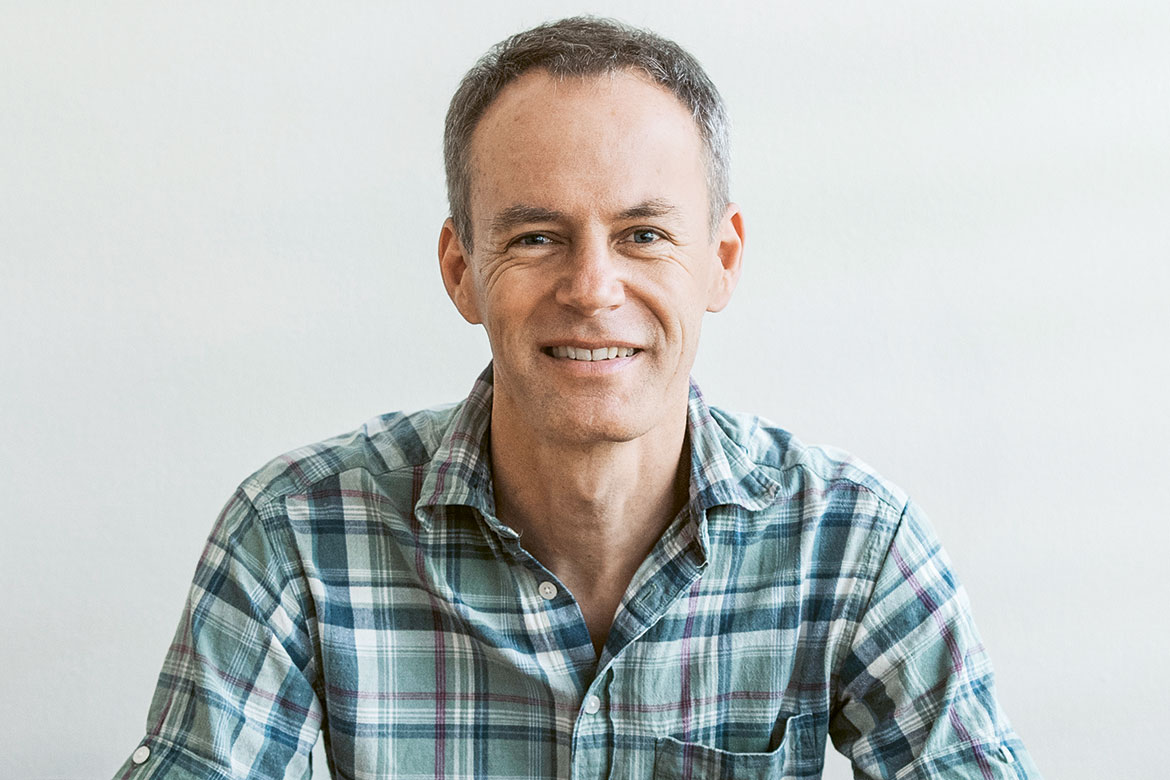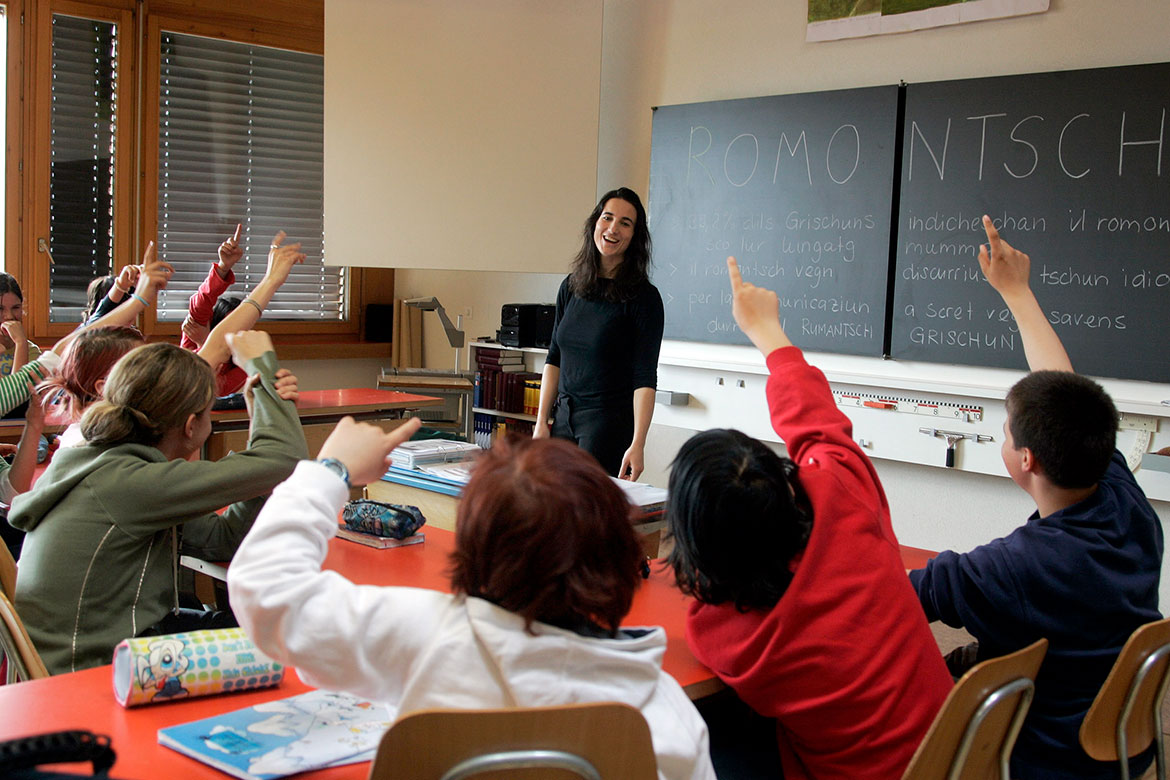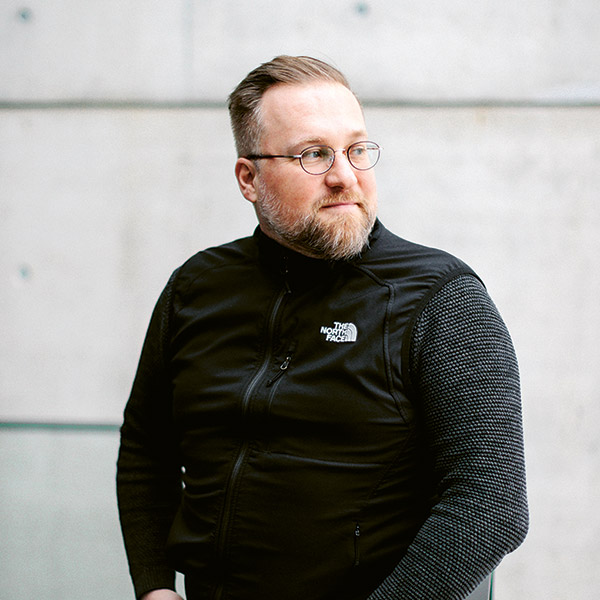Feature: Taking a fresh look at school
The teacher who investigates his own teaching
The Luuise Method enables teachers to improve their teaching on their own. The University of Applied Sciences and Arts Northwestern Switzerland (FHNW) offers Luuise in its professional development programme. The biology teacher Marcel Hatt has introduced it at the Zurich Oberland High School. He tells us why it’s won him over.

Marcel Hatt: “I address problems earlier than I used to. It means many potentially difficult situations can be defused even before they’ve really begun”. | Picture: Valérie Chételat
Marcel Hatt, you discovered Luuise early on, and have introduced it at your school. Why?
I run the working group at my school that deals with issues of quality development and assurance. I was immediately interested in Luuise when I heard about it, because it’s a tool that is directly useful in our everyday work at school. I was always fascinated by discussions about what makes for good teaching. This is all part of my self-understanding as a teacher. I see myself less as someone who has to be obeyed, and regard my teaching as more of a dialogue with the students. This passion for partnership-based teaching helped me through the difficult times at the start of my career, also in the work of our quality assurance working group. Because when the Zurich grammar schools were given instructions for carrying out quality assurance some 18 years ago, it was an unpopular topic among the teaching staff.
Why was that?
Back then, many teachers felt that they were being compelled to do extra work that was of no use to them in their everyday tasks, but was just part of a general reform. This scepticism had a lot to do with our limited time resources, and is something I absolutely understand. It’s also precisely why I wanted to offer projects in the realm of quality development that would bring tangible benefits for the time invested. Like Luuise. This tool links up directly with our everyday teaching, and offers a very direct way of helping teachers.
When you work with this method, how does it function in concrete terms?
Luuise enables teachers to get to grips with problems they encounter in their teaching – the method calls them ‘Knacknüsse’, literally ‘hard nuts to crack’. In one example at our school, students were finding it difficult to solve problems by themselves. One class was very hesitant about working independently. Using Luuise, the teacher in question managed to improve things in her class by employing a kind of visualisation for different stages in the working process. The assumption was that some students were not at all clear about how to start working, so achieving some kind of structure could help them.
What does such a structure look like?
It can be something very simple. In this example, the students placed one of three little paper hats of different colours on their desks, signifying three steps in the process of getting down to work. A yellow hat signified that they had gathered together all the materials they needed for their work; a green hat meant they had understood the problem they had to solve; and finally they would use a blue hat when they began solving the problem, or when they had identified where they were getting stuck. By observing these hats, the teacher could swiftly determine how many students were engaged in which stage of their work.
And this simple measure actually worked?
Yes. This simple structure enabled the class to make swifter progress towards working independently. And it’s also important that you discuss the results with the class. Here, for example, the teacher can ask: How can we make things work even better? This question shifts the responsibility from the teacher to the students, who are able to make an active contribution – in fact, it’s a contribution they have to make. Such a procedure is an encouraging thing. We recognise and acknowledge what succeeds, and discuss how we can make things even better.
You also run Luuise training programmes yourself, and see a lot of examples of the work of other teachers. Does this make you a better teacher yourself?
I think so, yes. I have noticed that working with this method has changed how I communicate in the school. I address problems earlier than I used to, and I ask more questions about what I can do to support the students. Many potentially difficult situations can therefore be defused even before they’ve really begun. And I generally move quicker onto a meta level. These changes have occurred more or less of their own accord since working with Luuise.




